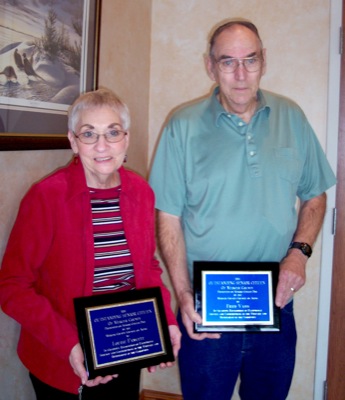Wednesday, May 18th, 2011
Endangered mussel study to cost county
By Amy Kronenberger
Auglaize County must pay for a survey looking for endangered mussels before work on a bridge can begin.
During a tour of bridges and ditches with commissioners, county engineer Doug Reinhart said the bridge off County Road 66A, two miles north of St. Marys, must be inspected for the rayed bean mussel that lives in the Auglaize and St. Marys rivers and Pusheta Creek.
The inspection could cost the county up to $10,000, he said. If the quarter-sized mussels are found on the bridge, the county could have to pay another $15,000-plus to have the clams relocated. This amount is in addition to the $400,000 cost to replace the deteriorating bridge deck.
The bridge must be replaced, and the survey must be completed before the county can receive environmental clearance, Reinhart said.
If the mussels are found on the bridge, the project will be pushed back six to 12 months, he said. Only one person in western Ohio is certified to complete the survey and relocation.
"If you ask the people living in Auglaize County if they want to pay $25,000 more for the project, we know what the answer will be," Reinhart said.
He is in the process of applying for federal aid to pay for 80 percent of the survey cost. Since the survey is a federal mandate, they should help pay for it, he said.
The survey must be completed with every project the county does on the three waterways.
Also during the tour, Reinhart told commissioners that county crews are behind in their work schedule due to the rain. He said in the last six months, his crew hasn't had a good day to start repairing broken tiles and culverts.
The drought last summer caused tree roots to spread in search of water, with many growing through tiles and eventually clogging them, Reinhart said. He said the county needs to clear the roots from the broken tiles and replace them with sealed, root-proof tiles.
The rain is also delaying workers from planting grass.
"We ordered a ton of grass seed for the spring, and we still have a ton of seed sitting in the garage," Reinhart said.
Additionally, the excess rain is getting into the cracks on road pavement and ruining the structural integrity. The county just doesn't have the money to cover these additional fixes, Reinhart said.
One good thing about a wet spring is putting the ditch projects from last year to the test, he said.
"It's gratifying to see how well the ditches are working in this wet spring," Reinhart said.
